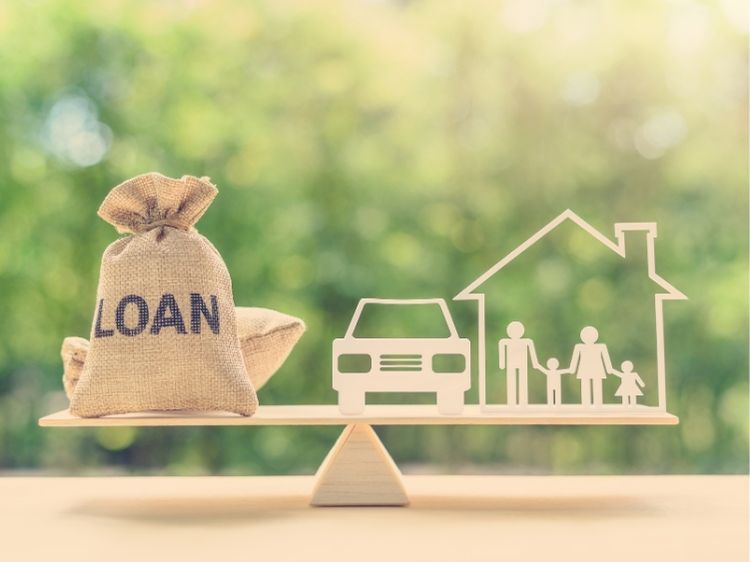What Is a HELOC Loan?
A HELOC loan, or Home Equity Line of Credit, is a financial product that allows homeowners to borrow against the equity in their property. It functions like a credit card, providing a revolving line of credit that you can use as needed, repay, and reuse. The primary difference? It’s secured by your home.
How Does a HELOC Loan Work?
At its core, a HELOC loan combines elements of a credit card and a home loan. Here’s the gist:
- Credit Limit:
The lender assesses your home’s market value and subtracts any outstanding mortgage balance to determine your credit limit. - Draw Period:
This is the time when you can actively borrow funds, typically lasting 5–10 years. During this phase, you might only need to pay interest on what you borrow. - Repayment Period:
After the draw period ends, you’ll enter a repayment phase (usually 10–20 years) during which you repay both principal and interest.
Why Choose a HELOC Loan?
So, why are so many homeowners turning to HELOC loans? Here are the standout benefits:
1. Flexibility
Unlike a traditional loan, a HELOC allows you to draw funds only when you need them. Got a leaky roof one month and an unexpected medical bill the next? No problem—you’ll only pay interest on what you’ve borrowed.
2. Lower Interest Rates
HELOCs generally come with lower interest rates compared to credit cards or personal loans. Since your home backs the loan, lenders consider it less risky.
3. Potential Tax Benefits
Depending on how you use the funds, you might qualify for a tax deduction on the interest you pay. (Always check with a tax professional!)
Drawbacks of a HELOC Loan
While a HELOC loan has plenty of perks, it’s not without its downsides:
- Fluctuating Interest Rates:
Most HELOCs have variable rates, meaning your monthly payments could rise unexpectedly if market rates increase. - Risk of Losing Your Home:
Since your home serves as collateral, failing to make payments could lead to foreclosure. - Fees and Costs:
From application fees to closing costs, the expenses can add up. Be sure to read the fine print!
Common Uses for a HELOC Loan
Wondering how a HELOC can work for you? Here are some practical ways to put it to good use:
- Home Renovations: Upgrade your kitchen, add a new bathroom, or replace that outdated HVAC system.
- Debt Consolidation: Combine high-interest debts into one manageable payment with a lower rate.
- Emergency Expenses: Cover unexpected costs without dipping into your savings.
- Education Costs: Pay for college tuition or other educational expenses.
HELOC Loan vs. Home Equity Loan: What’s the Difference?
People often confuse a HELOC loan with a home equity loan, but they’re not the same.
| Feature | HELOC Loan | Home Equity Loan |
| Payment Structure | Revolving credit | Lump sum |
| Interest Rate | Variable | Fixed |
| Flexibility | Draw as needed | Full amount upfront |
How to Qualify for a HELOC Loan
Think a HELOC loan sounds like a great fit? Here’s what you’ll need to qualify:
- Good Credit Score:
Most lenders require a score of 620 or higher. - Sufficient Home Equity:
You’ll typically need at least 15–20% equity in your home. - Low Debt-to-Income Ratio (DTI):
Lenders prefer a DTI below 43%, but requirements may vary. - Proof of Income:
Be ready to show pay stubs, tax returns, or other proof of stable income.
Steps to Apply for a HELOC Loan
- Evaluate Your Finances:
Assess your equity, credit score, and overall financial health. - Shop Around:
Compare interest rates, fees, and terms from multiple lenders. - Submit an Application:
Provide required documentation, including proof of income and a home appraisal. - Review Terms Carefully:
Understand repayment schedules, interest rates, and fees before signing. - Access Funds:
Once approved, start using your credit line as needed.
FAQs About HELOC Loans
1. Can I get a HELOC with bad credit?
It’s possible, but you might face higher interest rates or stricter terms. Improving your credit score before applying can increase your chances.
2. Is a HELOC loan better than a personal loan?
It depends on your needs. A HELOC offers lower interest rates but uses your home as collateral. A personal loan doesn’t require collateral but often has higher rates.
3. Are there limits on how I can use HELOC funds?
Generally, no. You can use the funds for anything from renovations to debt consolidation. However, keep in mind that some uses, like personal vacations, won’t qualify for tax deductions.
4. How much can I borrow with a HELOC loan?
This varies by lender but usually ranges from 80–90% of your home’s equity, minus your mortgage balance.
5. What happens if I can’t repay my HELOC?
If you default, the lender can foreclose on your home. It’s crucial to borrow responsibly and only what you can afford to repay.
Summary: Is a HELOC Loan Right for You?
A HELOC loan can be a financial lifesaver for homeowners needing flexible access to cash. With benefits like lower interest rates and potential tax perks, it’s a smart option for those with sufficient equity and a solid repayment plan. However, it’s essential to weigh the risks, especially if fluctuating interest rates or the potential loss of your home make you uneasy.
If you’re still unsure, consult with a financial advisor to determine whether a HELOC loan aligns with your long-term goals.
Authoritative Links for Further Reading
- Federal Trade Commission on Home Equity Loans: https://www.consumer.ftc.gov
- IRS Information on Deductible Interest: https://www.irs.gov
- Consumer Financial Protection Bureau Guide to HELOCs: https://www.consumerfinance.gov

